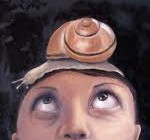From NY Times Op-Ed
“In the mid-1980s, a University of Arizona surgery professor, Marlys H. Witte, proposed teaching a class entitled “Introduction to Medical and Other Ignorance.” (…)
(…) She wanted her students to recognize the limits of knowledge and to appreciate that questions often deserve as much attention as answers. Eventually, the American Medical Association funded the class, which students would fondly remember as “Ignorance 101.”
Classes like hers remain rare, but in recent years scholars have made a convincing case that focusing on uncertainty can foster latent curiosity, while emphasizing clarity can convey a warped understanding of knowledge.
(…) By inviting scientists of various specialties to teach his students about what truly excited them — not cold hard facts but intriguing ambiguities — Dr. Firestein sought to rebalance the scales.
Presenting ignorance as less extensive than it is, knowledge as more solid and more stable, and discovery as neater also leads students to misunderstand the interplay between answers and questions.
(…) Questions don’t give way to answers so much as the two proliferate together. Answers breed questions. Curiosity isn’t merely a static disposition but rather a passion of the mind that is ceaselessly earned and nurtured.
(…) The resulting state of uncertainty, psychologists have shown, intensifies our emotions: not only exhilaration and surprise, but also confusion and frustration.
The borderland between known and unknown is also where we strive against our preconceptions to acknowledge and investigate anomalous data, a struggle Thomas S. Kuhn described in his 1962 classic, “The Structure of Scientific Revolutions.” (…)
The study of ignorance — or agnotology, a term popularized by Robert N. Proctor, a historian of science at Stanford — is in its infancy. (…)
Our students will be more curious — and more intelligently so — if, in addition to facts, they were equipped with theories of ignorance as well as theories of knowledge.” Read full story


















